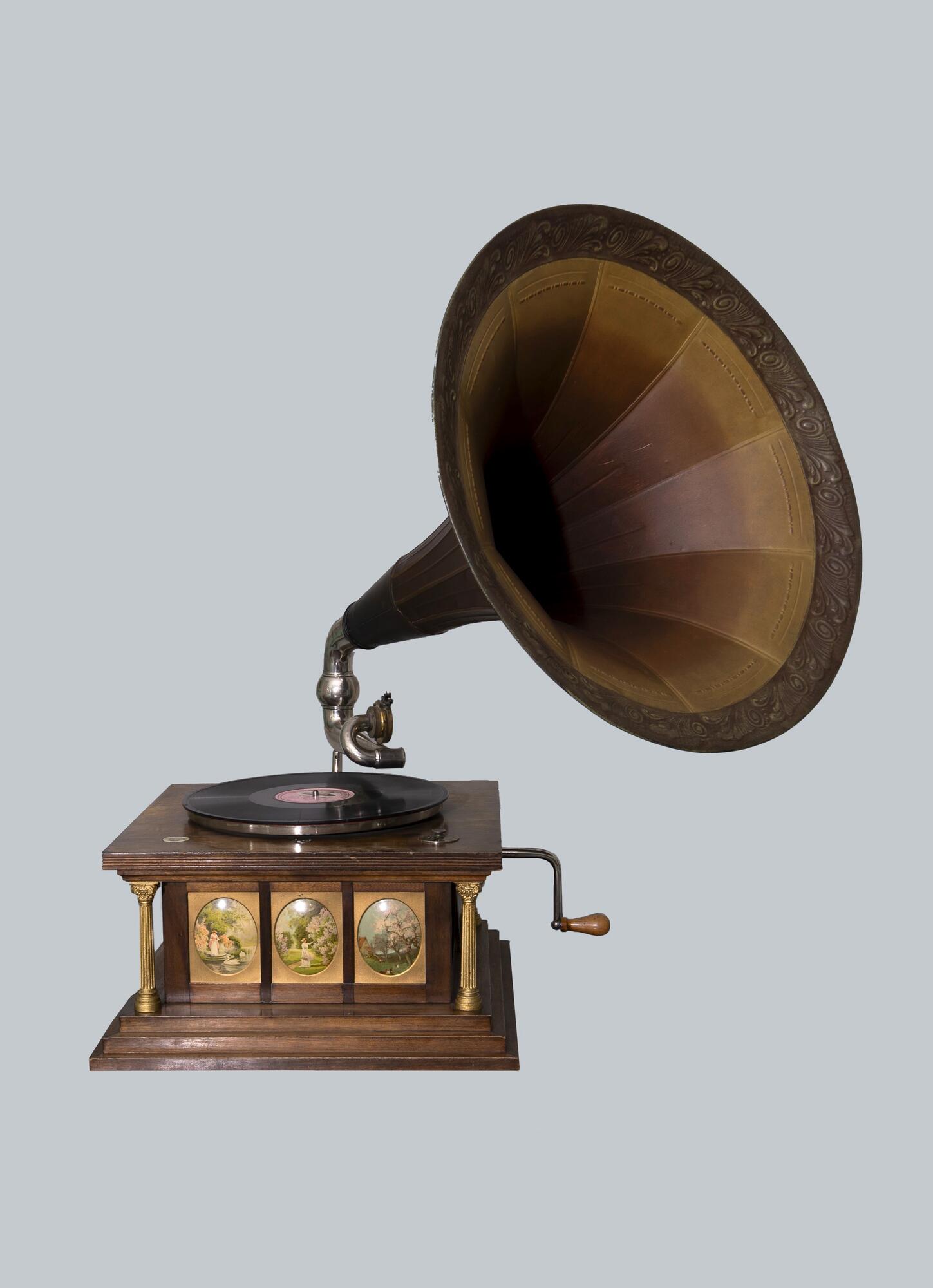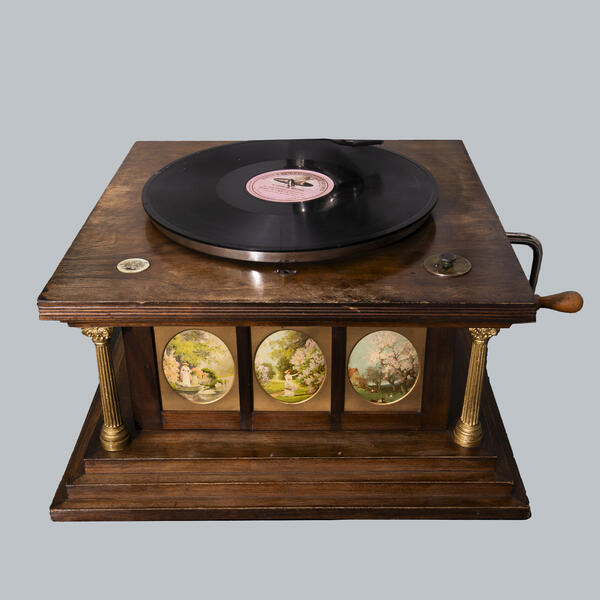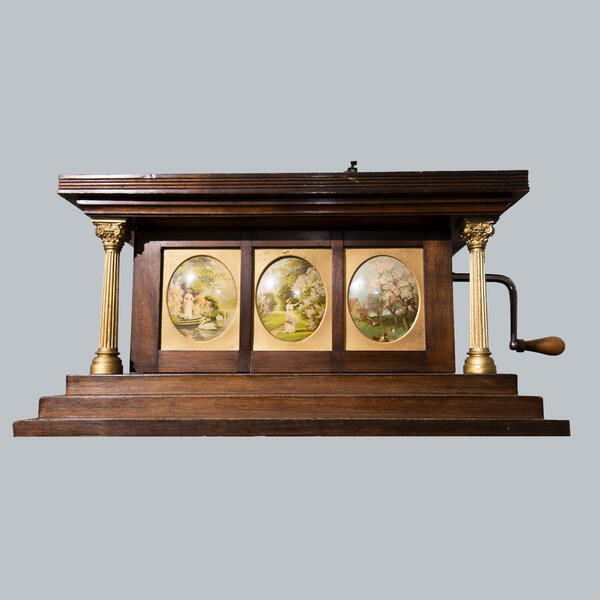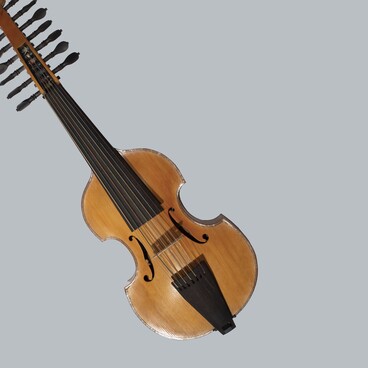The first gramophone (from the Greek “gramma” meaning “letter” or “record” and “phone” meaning “sound” or “voice”) was invented by Emile Berliner, a German-American engineer, in 1887.
The predecessors of the gramophone were Thomas Edison’s phonograph (1877) and the concept of the paleophone (“voice of the past”) by Charles Cros. Berliner took into account and eliminated the phonograph’s key disadvantage, its distorted and unintelligible sound, and kept modifying the design until he achieved a high sound quality.
The advent of sound recording devices necessitated the need for sound storage media, gramophone records. They were also improved by Emile Berliner who replaced the photochemical process with acid etching, increasing the volume of the record.
The demand for the gramophone reached its peak in 1902 when the popular Italian singer Enrico Caruso recorded ten songs for the gramophone. Having analyzed the public interest in such records, Emile Berliner suggested paying musicians for recording their songs.
The first gramophone centers in the Russian Empire were Riga (1901) and St. Petersburg (1902).
The gramophone is a case equipped with a turntable and a wind-up spring motor and connected to a sound box (“membrane”) with a stylus bracket, a movable tonearm, and a horn.
While the disc is rotated, the stylus traces the spiral groove and causes the membrane of the sound box to vibrate. Through the tonearm, the vibrations travel to the horn. To play the record, the spring is wound up using a crank (one winding is enough for one side of the record).
The volume could not be regulated, but the sound was loud enough. As a rule, horns were made of metal, but wooden ones were considered more valuable as they eliminated the “metal echo”.
There were all kinds of gramophones: desktop, pedestal-mounted, and portable; equipped with horns of different sizes; cheaper ten-ruble devices and inlaid models, made of precious wood or metals. Such luxurious gramophones could cost up to 1000 rubles.
The displayed American gramophone is decorated with
medallions bearing lacquer miniatures that depict landscapes in various
seasons. At the four corners of the case, there are small columns giving the
device a certain resemblance to an ancient temple.




